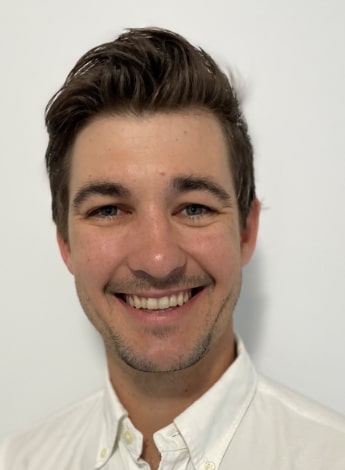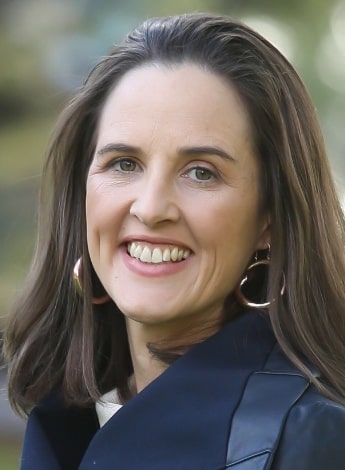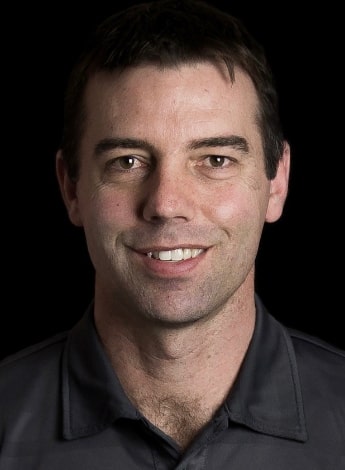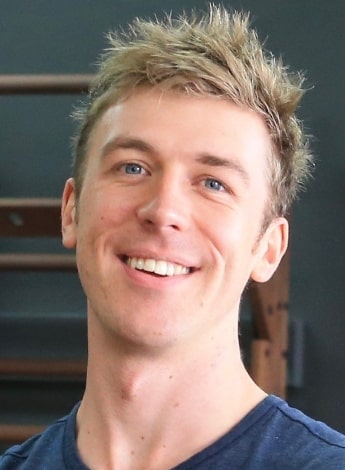
Unveiling new ideas

Originally scheduled to be held during the THRIVE conference, PitchFest 2022 has moved online and will be held on Wednesday 6 April as a free event.
Six finalists will present their physiotherapy products and ideas at PitchFest 2022.
First held in 2019, the competition, which is organised by the APA’s Physiotherapy Research Foundation, aims to identify innovative ideas or concepts—addressing unmet clinical needs—that can advance physiotherapy practice or improve patient wellbeing.
We asked the shortlisted finalists about their ideas and their vision for their concepts.
Alexander Roberts, Pragnetics, New South Wales—STIC: Magnetic Walking Aid

Alexander Roberts.
How did your idea come about?
For a physiotherapist, retrieving a fallen walking aid is a regular occurrence.
Not only is it frustrating and time-consuming, but I have seen patients endanger themselves as they attempt to retrieve their walking aids from the floor.
Then, coming home from work, I placed my mobile phone on my hands-free magnetic car mount.
It came to me that a similar product could be made for walking aids to allow for easy and secure access.
What do you hope it will achieve?
I hope to prevent falls in those requiring walking aids, in both hospital and community settings.
Positive impacts include reducing trip hazards, reducing bending and increasing mobility aid adherence.
Daniel Hug, Hug Health, Western Australia—SummaRise: Intelligent Falls Assessment and Prevention app

Daniel Hug.
What gave you the idea for the app?
Three years ago, I was working in a residential aged care facility and was asked to review a resident after a fall on the weekend.
Unfortunately, during the initial assessment, a fracture was missed and the resident was left in bed for two days with a pelvic fracture.
I was inspired to find out how this could have happened and to stop it from ever happening again.
From this the idea for SummaRise was born.
How do you hope it will impact the profession?
We hope that this tool will enhance clinical care by improving how we assess, document and manage falls in residential aged care.
With the use of big data and artificial intelligence, our vision is to accurately predict falls risk and to create person-centred falls prevention plans on admission.
Emily Ramage, Hydro Functional, Victoria—Aquatic Physiotherapy Digitally Delivered Arthritis 'Kickstarter' Program

Emily Ramage.
What led to the development of this program?
Physiotherapists have great education and exercise options to help people with arthritis.
Our experience is that buoyancy in pool-based programs is a bonus when exercising with pain or weakness.
However, we find that lots of people don’t have the confidence to continue exercising at their local pool after finishing an aquatic physiotherapy program.
We wanted to help with video-guided sessions.
We also wanted to give people who don’t access health services the option to exercise in a fitness setting at their local pool with an evidence-based exercise program designed specifically for them.
What impact do you hope it will make?
Aquatic physiotherapy has a strong evidence base and we want to promote this profile in the community.
We hope to make physiotherapy-prescribed aquatic exercise an accessible, low-impact option for people with arthritis at any pool.
We know from our program pilot that there were many enquiries from people with more complex health conditions.
Our telehealth and online program wasn’t the right option for these people.
They needed to see a physiotherapist or aquatic physiotherapist in person.
We see the Aquatic Physiotherapy Digitally Delivered Arthritis Program as being a good channel for referrals to make sure that everyone who is looking for an exercise option can find the right advice and to ensure a safe, holistic approach to managing chronic disease and persistent pain.
Luke Mason, Global Movement, South Australia—Shoulder Mobiliser

Luke Mason.
How did you develop this device?
As a private practitioner with a particular interest in orthopaedic rehabilitation, I encounter inconsistent outcomes for patients following shoulder surgery in my day-to-day clinical work.
A conversation with an orthopaedic surgeon about the need to better rehabilitate patients after shoulder surgery inspired us to initiate the development of a handheld motorised device.
This device has the ability to allow early shoulder mobilisation, to track and monitor progress and potentially to lead to improved clinical outcomes and rehabilitation compliance for this patient group.
What contribution will this make to the physiotherapy profession?
This device aims to address an unmet clinical need in shoulder rehabilitation.
It will allow a patient to safely mobilise their shoulder in the early postoperative period.
This could significantly reduce the length of rehabilitation, improve functional outcomes and minimise the risk of complications after surgery.
The inclusion of a smart app and other additional technology aims to motivate patients, guide exercise prescription and provide valuable feedback to the clinician.
In the long term, data from this device could be gathered to provide clinically relevant information, inform research and guide clinical practice and exercise protocols, which could be of great benefit to the profession as a whole.
Nicholas Piggott, Western Australia—The Wave Press™: Rehabilitation Equipment

Nicholas Piggott.
Where did this idea come from?
The latest evidence demonstrates that the majority of individuals do not complete enough targeted, lower-limb strength training to optimise their mobility outcomes after stroke.
Due to therapists’ limited time and resources, individuals are often unable to achieve this volume during supervised therapy alone.
The current repertoire of standard ‘bed exercises’ does not serve this patient population and, as a result, such exercises are rarely completed effectively as an adjunct to therapy.
The idea for this tool is to facilitate safe and effective ‘in-bed’ strength training, independently or with the assistance of a loved one.
How will this improve outcomes?
By increasing the user’s strength in between therapy sessions, the tool allows physiotherapists to better utilise their time with patients, practising functional tasks and optimising clinical outcomes.
Sam Suke, Exercise Thought Physiotherapy, Victoria—The TEAM (team-enhanced accountability model) approach to clinical placements in private practice

Sam Suke.
What was the impetus for creating this model?
I have advocated for improved work readiness for new graduates in primary contact physiotherapy on three APA councils.
Various strategies have been employed to smooth and expedite students’ ability to perform in private practice settings.
The most promising emerged, in disguise, when physical distancing requirements prevented hundreds of students from attending clinical placements in the usual manner.
Exercise Thought Physiotherapy offered to adapt its method of hosting clinical placements by combining physical attendance (where government restrictions permitted same) with virtual attendance.
Patient-facing and homework tasks developed skills that are critical to successfully performing the important role of a primary contact clinician.
Four universities contributed more than 70 students combined across more than 800 days of clinical placement.
How will this affect clinical placements and the profession in general?
I hope that increased access and efficacy of clinical placement within primary contact settings will reduce risk to the physiotherapy profession, decrease diagnostic errors and improve the length and quality of physiotherapy careers.
In addition to the Judges’ Award, there is the opportunity for the audience to vote on the People’s Choice Award. Click here to register for this free event and see this year’s finalists pitch their ideas.
© Copyright 2025 by Australian Physiotherapy Association. All rights reserved.





